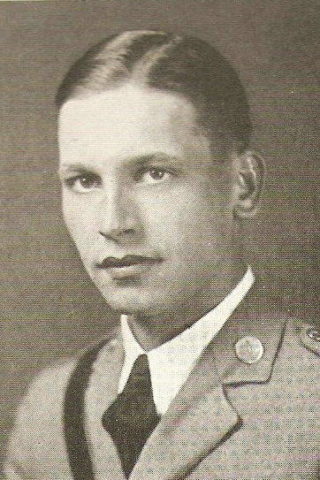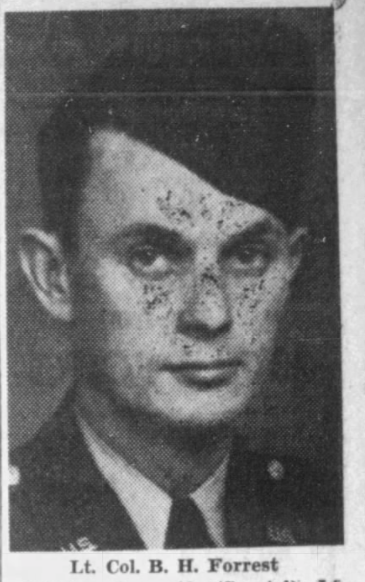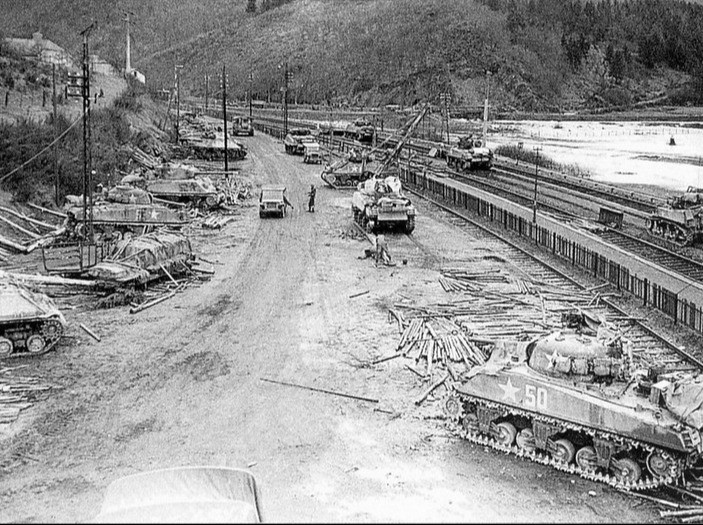Colonel Bedford H. Forrest was killed in action in France November 26, according, to word received by his mother Mrs. Mattie S Forrest of Saluda.
Colonel Forrest, who was 34 years of age was serving with the Sixth Armored Division of General Patton's 3rd Army and had been in the army since 1941. He was graduated from Command and General Staff school at Fort Leavenworth, Kansas in January of 1944 and left for overseas a month later.
He was a native of Saluda county and was graduated from Clemson college with the class of 1932 having the status of reserve officer.
Before entering the army, Colonel Forrest was connected with the Soil conservation service and was stationed in the High Point and Danbury, N.C. areas and held the rating of junior agronomist with the service.
Colonel Forrest was reported seriously wounded in action August 6, but returned to duty with his battalion soon after. He was awarded the Purple Heart and the Bronze Star for meritious service in France.
He was a member of the Emory Methodist church and a a young man of strong character. He was a leader of men and an excellent officer, thoughtfull of hist men as he was of his civilian responsibilities, unswerving in his ideas of right and integrity with a high regard for duty.
The young officer was the son of Mrs. Mattie S. Forrest and the late James M. Forrest, who was a well known farmer, merchant and legislator from Saluda county. Besides his mother he is survived by one sister Miss Jimmie Margaret Forrest, two half-brothers. John W. and P.V. Forrest; and a half-sister, Mrs. Lucille Forrest Edwards, all of Saluda.
From the book: The Super Sixht (Hofmann)
Task Force Forrest of CCA, operating in a northeasterly direction in the division's zone, was experiencing the problems that befell most of the division. Hine who was having difficulty in attacking, directed Forest to put his tankers through the Foret de Puttelange toward the road junction on the north edge of te woods leading toward the town of Hostehaut. Hines was taking the chance that it would be less strongly defended than the Maginot positions in the vincity of Valette, and also it would position the force around some elements of enemy defenders. Forrest divided his Task Force into two columns. Moving out from St. Jean-Rohrbach early in the morning, the reconnaissance unit headed for the Foret de Puttelange where light resistance was easily overcome. As Captain Rice, B Company Commaning Officer and leader of one the colums, exited the woods, he encountered a road block which could not be passed. Rice's column was forced to remain on the road and was subjected to heavy mortar and artillery fire. The battalion S-3 claimed that over 800 enemy rounds hit the area from the direction of Henriville and Farebersviller. The tankers could not support the infantry or engineers who attemted to push on in order to clear the road block. Forrest had Rice withdraw from the roadblock through the woods to avoid an ambush and guard his exposed flank. The other column, commanded by Captain Donald P. Kirchner of C Company, was unable to enter the woods due lack of infantry support. The tanks were useless in the wooded area beause they were unable to deploy. This situation prevented the tankers from offering supporting fire for the infantry without endangering their progress. Only the leading tank was positioned to offer supporting fire and then directly on the road. Friendly artillery caused no change in the amount of enemy fire Forrest's task force received, but tended to increase as the tankers inched forward. Quite miraculously Task Force Forrest's casualties were: one killed, fourtheen wounded, and two reported missing in action. The one fatal casualty was Bedfort H. Forrest who was killed by a mortar burst as he stood in the turrent of his tank directing the withdrawal. The news stunned General Grow, who considered Forrest one of his best tank commanders. Since the beginning of the Saar Campaign the 6th Armored Division lost two battalion commanders to enemy action - Stablein of the 9th Armored Infantry Battalion and Forrest of the 69th Tank Battalion. The latter was replaced by Major Chester E. Kennedy, executive officer of the Battalion. Eventually, TF Forrest withfrew from the woods to the high ground northwest of St. Jean-Rohrbach and outposted for the night.

